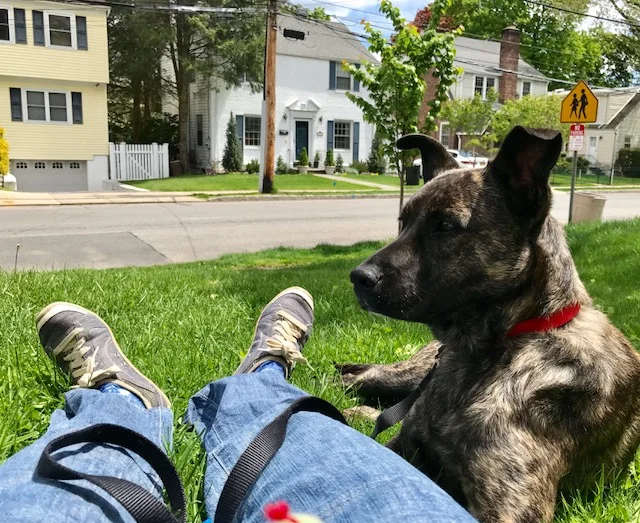By Rye Sustainability member Jenny Hirsch
Here in Rye, we all know the importance of walking your dog. The health benefits of dog walking for the dog owner are obvious. It is also safe to say that dogs who are walked stay healthier. And it is equally satisfying to note that dogs and their owners have a greater emotional bond when they walk together. I have become a busy local dog walker and see this all first hand. I also see landscapers spraying lawns with pesticides and have learned of the dangerous health effects on our precious doggies that walk and even eat this toxic grass. On behalf of the Rye Sustainability Committee I am writing this article to educate and remind residents how a healthy lawn can have a positive effect on the health of your pet. (I know their are some cats on harnesses as well because I am one of those cat walkers.)
Health Dangers of Lawn Pesticides to your Pet
The dangers to pets of chemical use on lawns are very real. According to PET MD "many pets are susceptible to falling ill as a result of exposure to lawn chemicals." And the lingering effects of these dangers are profound: Pesticides that are applied outdoors "often make their way indoors and onto surfaces."
According to the medical director of the ASPCA Animal Poison Control Center, "Lawn chemicals can vary widely in their safe use around pets. Some items such as fertilizers may only cause stomach upset, while others such as insecticides can be deadly."
Lawn pesticides have been linked to cancer in pets, nervous system disruption, respiratory failure, and serious digestive problems. Even if you don’t use these chemicals on your lawn, a neighbor's lawn can also pose a threat.
Things You Can Do to Protect Your Pets
- Use natural lawn care techniques. Check the Rye Healthy Yard Section for details.
- If you must use pesticides:
- Never apply pesticides when pets are on the lawn.
- Remove all feeding bowls, water dishes, and pet toys from any area before applying a pesticide.
- Avoid using pesticide in pellet form because it can look like food.
- Watch for signs indicating when areas have been treated. Avoid walking in these areas with your pet for at least 72 hours.
- Use alternative techniques for controlling fleas and ticks
- Get to know how your neighbors treat their lawns and how it can affect your pet.
Let's all plan to make some healthy lawn changes today. Your furry babies will thank you!
Additional information about pets and pesticides can be found here. The ASPCA Guide to Pet Safe Gardening can be found here.
Visit our Rye Healthy Yard Section to learn more. And ...
Take the RHYP Pledge!




